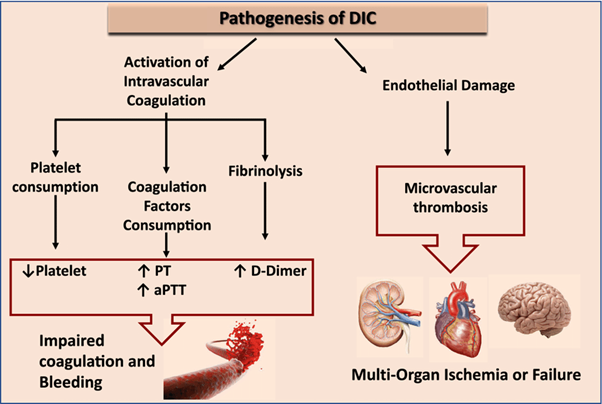A 78-kg patient with septic shock has a urine output of 30 mL/hr for the past 3 hours. The pulse rate is 120/minute and the central venous pressure and pulmonary artery wed pressure are low. Which order by the health care provider will the nurse question?
Administer hydrocortisone (Solu-Cortef) 100 mg IV.
Give PRN furosemide (Lasix) 40 mg IV.
Increase normal saline infusion to 250 mL/hr.
Titrate norepinephrine (Levophed) to keep systolic BP >90 mm Hg.
The Correct Answer is C
In septic shock, one of the key goals of management is to restore and maintain adequate intravascular volume. However, in this case, the patient's urine output is low (30 mL/hr for the past 3 hours), suggesting inadequate renal perfusion and potential fluid overload.
Administering additional normal saline at an increased rate (250 mL/hr) without addressing the low urine output could potentially exacerbate fluid overload and further compromise the patient's condition.
A. Administer hydrocortisone (Solu-Cortef) 100 mg IV in (option A) is incorrect because: Hydrocortisone is commonly used in septic shock to help stabilize blood pressure and modulate the inflammatory response.
B. Giving PRN furosemide (Lasix) 40 mg IV in (option B) is incorrect because Furosemide, a loop diuretic, can be administered as needed to address fluid overload or to increase urine output if there is evidence of volume overload.
D. Titrate norepinephrine (Levophed) to keep systolic BP >90 mm Hg in (option D) is incorrect because: Norepinephrine is a vasopressor commonly used in septic shock to increase systemic vascular resistance and maintain adequate blood pressure.
Nursing Test Bank
Naxlex Comprehensive Predictor Exams
Related Questions
Correct Answer is D
Explanation
Norepinephrine is a vasopressor medication commonly used in the management of septic shock. It acts as a potent vasoconstrictor to increase systemic vascular resistance and improve blood pressure. By constricting blood vessels, norepinephrine helps restore tissue perfusion and improve organ function.
A. Nitroglycerine (Tridil) in (option A) is incorrect because: Nitroglycerine is a vasodilator and would further lower blood pressure. It is not suitable for a patient with septic shock who already has low blood pressure.
B. Atenolol (Tenormin) in (option B) is incorrect because: Atenolol is a beta-blocker and would further decrease heart rate and blood pressure. It is not appropriate for a patient in septic shock who requires intervention to increase blood pressure.
C. Dobutamine (Dobutrex) in (option C) is incorrect because: Dobutamine is an inotropic medication used to increase cardiac output. While it can be helpful in certain types of shock, such as cardiogenic shock, it is not the first-line choice for septic shock when there is inadequate blood pressure response.
Correct Answer is B
Explanation
Disseminated Intravascular Coagulation (DIC) is a condition characterized by widespread activation of the coagulation system, leading to both excessive clot formation and consumption of clotting factors and platelets. This process can result in both bleeding and thrombosis.
The manifestations mentioned in option B are commonly seen in DIC:
Decreased platelet counts: DIC leads to platelet consumption and destruction, resulting in low platelet counts (thrombocytopenia).
Increased D-dimer: D-dimer is a fibrin degradation product, and its levels are increased DIC due to the breakdown of fibrin clots.
Increased prothrombin time (PT): DIC can lead to the depletion of clotting factors, resulting in prolonged prothrombin time, indicating impaired coagulation.
The other options mentioned do not represent the typical clinical manifestations of DIC:
A. Decreased hematocrit, increased platelet counts, and increased D-dimer in (option A) are incorrect because While platelet counts and D-dimer are increased in DIC, decreased hematocrit is not a characteristic finding.
C. Decreased Antithrombin III, increased platelet counts, and increased fibrinogen in (option C) is incorrect because: Decreased Antithrombin III can be seen in DIC, but increased platelet counts and fibrinogen levels are not specific to DIC.
D. Decreased D-dimer, increased platelet counts, and increased hemoglobin in (option D) is incorrect because Decreased D-dimer and increased hemoglobin are not typical findings in DIC, while increased platelet counts can be seen in some cases.

Whether you are a student looking to ace your exams or a practicing nurse seeking to enhance your expertise , our nursing education contents will empower you with the confidence and competence to make a difference in the lives of patients and become a respected leader in the healthcare field.
Visit Naxlex, invest in your future and unlock endless possibilities with our unparalleled nursing education contents today
Report Wrong Answer on the Current Question
Do you disagree with the answer? If yes, what is your expected answer? Explain.
Kindly be descriptive with the issue you are facing.
